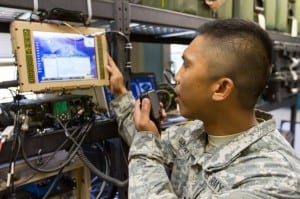
By linking several communication systems and devices, the Army and Navy have developed a method of transmitting voice calls and location information over the vast distances with which soldiers and sailors must operate in the Asia-Pacific region.On Feb. 18, soldiers on board an Army logistics supply vessel (LSV) demonstrated integrated communication capability among the ship, Oahu and the Big Island of Hawaii as they sailed among the islands. Soldiers aboard the ship established seamless voice and data communication with units…

 By
By 











